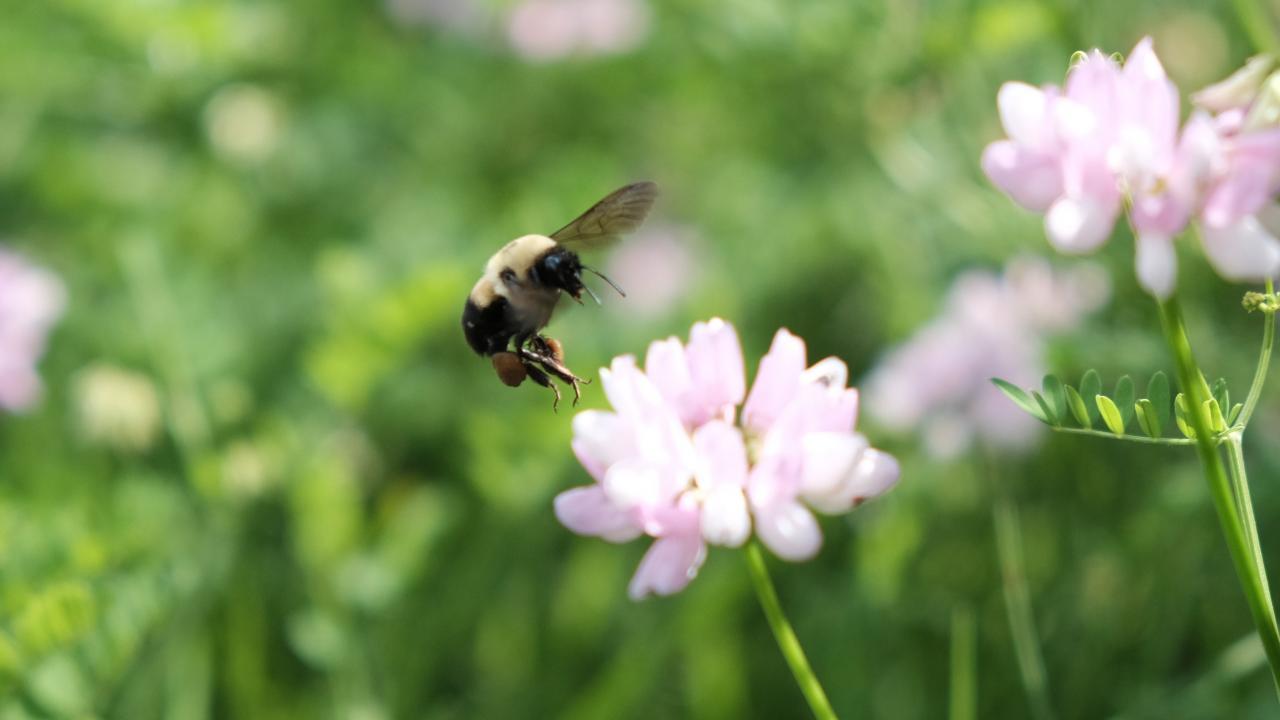
Social Bee-stortion: Exploring Pesticide’s Effects on Pollinators
A pesticide banned in the European Union but still in use in the United States is proving to have detrimental effects on pollinators. In a study appearing in Science, researchers show that the pesticide imidacloprid, which has been sold in the U.S. since 1994, disrupts bumblebee (Bombus impatiens) nest behavior, causing reduced growth in exposed colonies.
“We’ve known for a while that imidacloprid is bad for bumblebees and a number of bees,” said study co-author Stacey Combes, an associate professor of neurobiology, physiology and behavior at UC Davis. “This work adds another piece of strong evidence that these pesticides should be banned in the U.S., just like they are in the E.U.”
A look inside the hive
Imidacloprid is generally applied as a seed coating to protect crops and plants from being eaten by insects. While an effective deterrent against pests, it eventually spreads throughout the plant, manifesting in the pollen and nectar. This spells trouble for helpful pollinators like bees.
“There’s work showing that exposure to these pesticides reduces productivity, less queens are made and the hives don’t do as well overall,” said Combes, noting that previous studies have also explored the pesticide’s effects on behaviors outside the hive, showing a reduction in navigation skills. “This is the first time anyone has looked at behavior within the hive.”
To study behaviors within the hive, Combes and colleagues, led by Combes’ former graduate student James Crall, outfitted bumblebees with tiny QR code tags—a system called BEEtag—for identification purposes. They then dosed the bees with field-realistic concentrations of imidacloprid and monitored their subsequent behavior by video.
